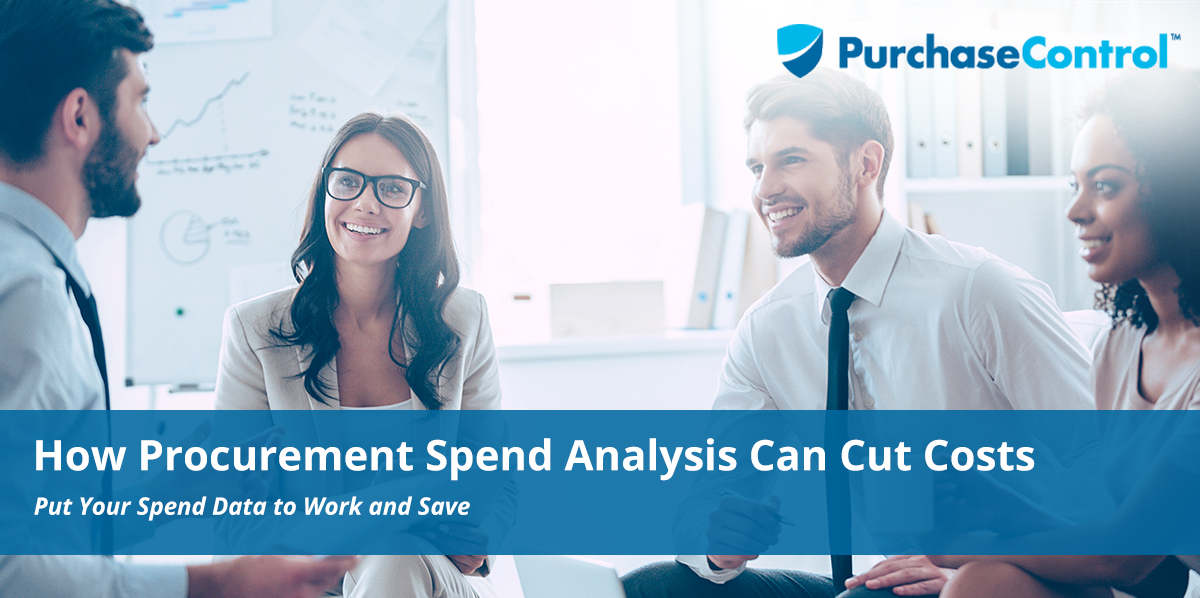Is your company’s spend sapping your profitability? While it’s true that you often have to spend money to make money, optimizing every dollar spent by tapping into the cost-slashing power of procurement spend analysis creates significant savings opportunities over flying blind.
To get an optimal return on your investment, it pays (literally) to understand and implement effective procurement spend analysis as part of your overall business process management. Take a closer look at how to streamline your spend and save.
Why Procurement Spend Analysis Matters
Successfully navigating the intricacies of the global marketplace means finding ways to squeeze more value from every dollar spent. For chief financial officers (CFOs), chief procurement officers (CPOs), and other procurement professionals in all industries, doing so means looking for savings opportunities created by cost reductions and improved efficiency throughout the supply chain.
Spend analytics provide value by making it easy for organizations to:
- Collect, consolidate, and organize all the big data generated by the “business of doing business,” aka workflows and business processes.
- Gain total transparency into this collected data through spend analysis, generating actionable insights that provide greater value in the form of more refined process improvements and further reduced costs.
This transparency can be particularly useful in taming two very common procurement frustrations: excessive maverick spend and inadequate supplier management.
Having full spend visibility means you can identify areas where your staff are stepping outside established protocols for indirect spend to purchase goods and services, either as a one-off or, in more serious cases, to deliberately circumvent policy or commit fraud. Analyzing process and transaction data also provides insights into costly approval bottlenecks and other delays that can create additional “hidden” costs in the form of disrupted production, late payment fees or lost discounts.
Similarly, having eyes on the entire procure-to-pay (P2P) process from start to finish gives you a rich source of performance and compliance data you can analyze to make more informed decisions. You can determine which suppliers are your best, which ones need a little help, and which ones are too unreliable, underperforming, or just plain dangerous to be part of your supply chain.
Without the data management and insights available with a procurement solution that includes spend analysis tools, your company may find itself struggling with issues in areas ranging from cash flow to financial forecasts to contract management to dangerous levels of risk exposure (both internal and external).
Conversely, having the tools needed to do a deep dive into spend data gives procurement teams and financial pros the information they need not just to tame maverick spend or improve supplier management through strategic sourcing, but also:
- Improve contract management and by applying the insights gleaned from actual versus forecasted pricing and performance benchmarks for vendors.
- Develop deeper and more strategic supplier relationships by reducing the number of suppliers (removing redundancies) and shifting focus to the benefits of shared opportunities and economies of scale.
For example, a better sourcing strategy revealed through spend analysis might be to renegotiate for better pricing, quality, and terms from a preferred supplier with a proven track record and capacity, rather than making multiple smaller purchases from vendors with varying levels of quality and performance.
The latter choice may save a modest amount of money on the front end, but may lose the company much more to delays, errors, and inefficiencies in invoicing. - Bring ad-hoc spend and project-based budgets “in from the cold” of indirect spend and incorporate them completely with other spend data in order to apply spend analysis.
- Support the development of general cost reduction initiatives across business units and the entire organization through insights that drive reduced waste, lower procurement costs, greater efficiency, and a stronger bottom line while building value through (for example) a lower total cost of ownership (TCO) for company assets and process improvements such as reduced cycle times for both purchase orders and invoices.
“Making a procurement solution with intuitive, integrated data management and spend analysis capabilities part of your procurement function’s standard operating procedures makes it easier to collect, manage, and analyze all your spend data.”
Procurement Spend Analysis Process
Conducting a proper spend analysis might seem daunting. But like most business processes, it’s akin to eating an elephant—the whole thing becomes much easier when broken down into easily-digested chunks.
Of course, before you dig in, it’s helpful to have the right spend analysis tools in hand. After all, even if you’re eating the elephant bite by bite, there’s no sense in coming at it with a pickle fork and a plastic knife. Making a procurement solution with intuitive, integrated data management and spend analysis capabilities part of your procurement function’s standard operating procedures makes it easier to collect, manage, and analyze all your spend data.
For example, PurchaseControl’s spend analysis tools are powered by automation and machine learning that makes continuous improvement part of your procurement process at all levels, so you gain the most powerful benefits of spend analysis, including greater insights, more informed decisions, and greater savings.
The procurement spend analysis process itself can be broken out into seven discrete steps:
- Identify Spend Data. The first step is to identify every potential source of spend data, across all your business units, including the general ledger, eProcurement system, accounts payable department, etc.
- Collect Spend Data. Route all your information to a single, central database, accessible as appropriate and required by all stakeholders. This same data can be used by your enterprise resource planning (ERP) software, accounting packages, customer resource management (CRM) suite, etc. through integration with your eProcurement system.
- Cleanse Spend Data. Review and organize your data, making corrections where necessary and standardizing the format of all spend data.
- Organize Suppliers. Categorize your vendors in however many ways you need to achieve total transparency with regard to compliance and performance. A procurement solution with a supplier management suite makes this much easier, and also allows you to organize and analyze vendor data more easily.
- Categorize Spend. Decide how you want to organize and categorize your spend data; popular options include United Nations Standard Products and Services Code (UNSPSC), eClass codes, and proprietary systems. Whatever your choice, you need to see and track all your spend for procurement analytics to be effective, so make sure everything is properly categorized and incorporated into your procurement process.
- Analyze Spend Data. Both historical and real-time data can yield actionable insights once analyzed and used to generate spend analysis reports. Spend data can help you identify opportunities for process improvement, cost reductions, and strategic sourcing, and also help you build smarter, more accurate budgets and financial forecasts. Cash flow will be improved as well, since maverick spend won’t be throwing any spanners into the works.
- Ongoing Spend Management. While your first spend analysis is a useful tool for kickstarting savings, making it work long-term means regular monitoring your processes and spend, making improvements, and then analyzing performance once again to further refine your workflows, identify exciting opportunities for innovation and growth, and maximize your procurement cost savings.
Invest in Spend Analysis to Save Time and Money
Whether you’re the chief procurement officer, CFO, or managing a procurement team, procurement spend analysis is a key part of turning data into dollars. Make spend analysis part of your procurement strategy, and gain the clarity you need to optimize your supply chain, make smart and strategic decisions, and get an optimal return on your procurement spend.
Get Total Visibility and Control over Your Procurement Spend with PurchaseControl
Find Out How








